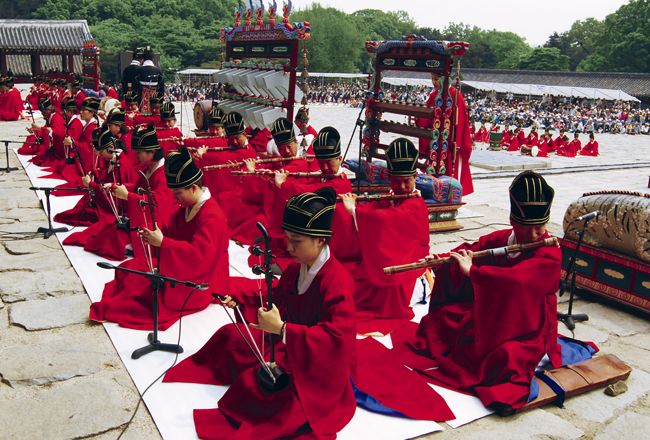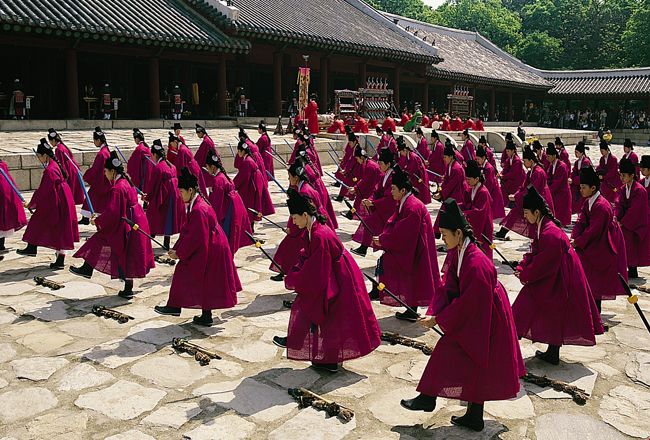Discover Korea's World Heritage
Jongmyo Shrine
Jongmyo Shrine, the First Established Symbol of the Joseon Dynasty
Upon founding the Joseon Dynasty, Yi Seong-gye, who became King Taejo, decided Hanyang as his new kingdom’s capital and selected a site for Gyeongbokgung Palace. His first task was to build Jongmyo Shrine and Sajikdan Altar. Jongmyo is a shrine housing memorial tablets for deceased kings and queens, and a place to hold ancestral memorial rituals. Sajik refers to the gods of earth and harvest, and the Sajikdan Altar was used to pray for a bountiful year and the welfare of the people.
Source: Cultural Heritage Administration
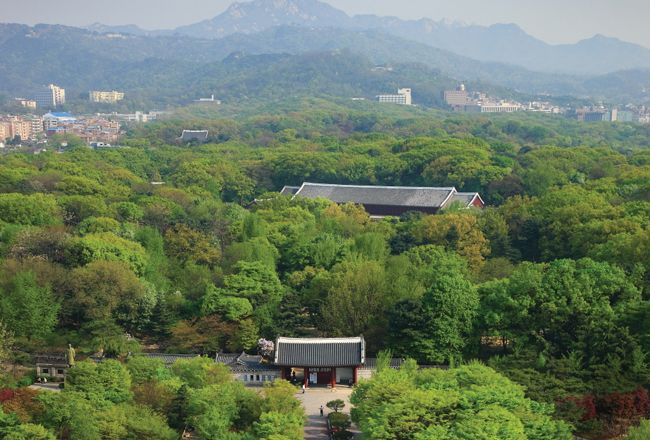
Jongmyo Shrine
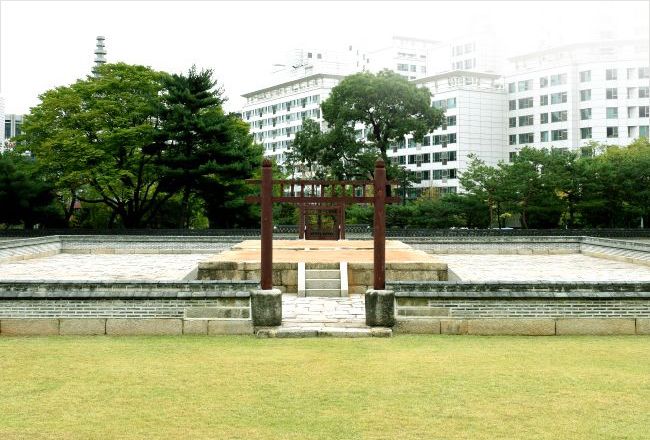
Sajikdan Altar
Structure of Jongmyo Shrine
The most important buildings within Jongmyo Shrine are the Jeongjeon Hall (Main Hall) and the Yeongnyeongjeon Hall (Hall of Eternal Peace). The Jeongjeon Hall has 49 spirit tablets of deceased kings and queens who made great contributions to the nation, including King Taejo, the founder of the Joseon Dynasty. Thirty-four memorial tablets that were not kept at the main hall are enshrined at the Yeongnyeongjeon Hall. The Gongsindang Hall (Hall of Meritorious Subjects) across the yard from the Jeongjeon Hall houses the tablets of 83 loyal subjects of the Joseon Dynasty.
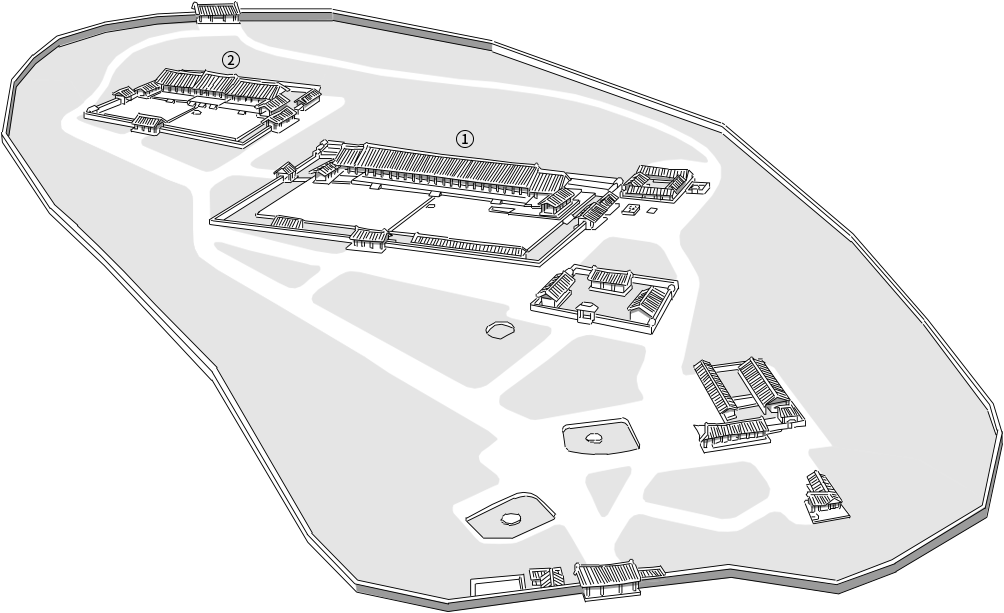
① Jeongjeon Hall② Yeongnyeongjeon Hall
-
Sinju, Where Spirits of Ancestors Dwell
Sinju is a small wooden tablet with the name of a deceased person written on it. Korean ancestors believed that the spirits of the deceased would dwell in the tablets and take a rest there. The Joseon Kingdom lasted for 519 years, producing a total of 27 rulers from King Taejo to King Sunjong. At Jongmyo Shrine, memorial tablets of 25 kings are enshrined, excluding those of two kings, Yeonsangun and Gwanghaegun, who were deposed from the throne.
-
Source: Cultural Heritage Administration
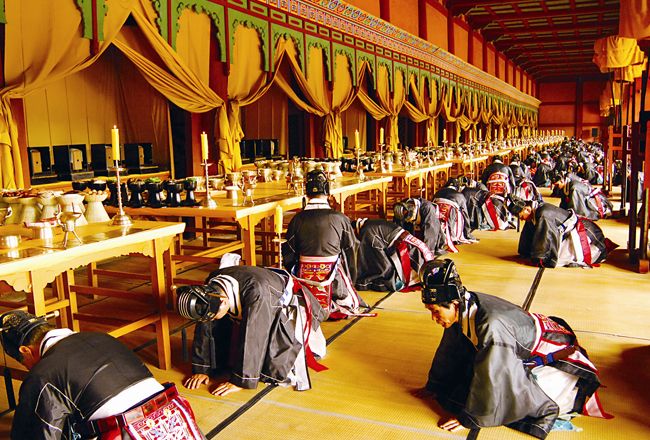
Jeongjeon Hall, the Height of Restrained Beauty
The Jeongjeon Hall, the main hall of the shrine, is the world’s longest single wooden structure, with its length measuring 101 meters. When Jongmyo Shrine was completed in 1395, the main hall had seven chambers. Later, the place was expanded to accommodate more tablets in 19 chambers, in the form we see today. The Jeongjeon Hall, where the tablets of deceased ancestors are enshrined, has very little ornamentation and avoids showy colors. However, the architectural space embodies the highest-level formalities needed for memorial rituals dedicated to the late kings, as well as frugality.
Source: Cultural Heritage Administration
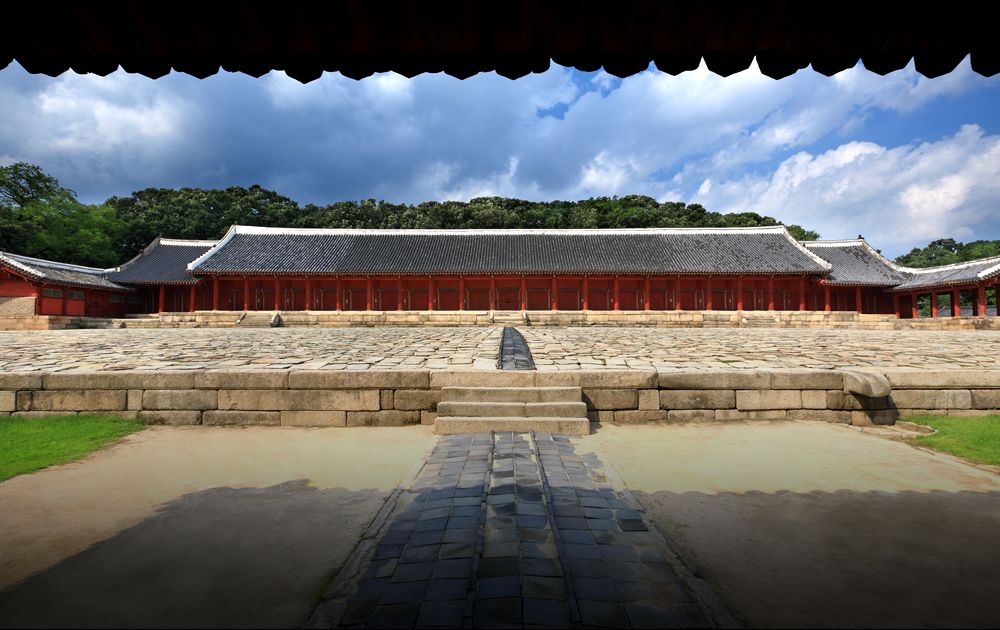
Structure Reflecting Filial Devotion
Near the Oedaemun Gate (the main gate) stands a stone tablet called “Hamabi,” meaning the “tablet of dismounting from the horse.” It implies that anyone, including kings, should get off from their palanquins when they reach the main gate and pass the gate on foot as a show of respect to the ancestors.
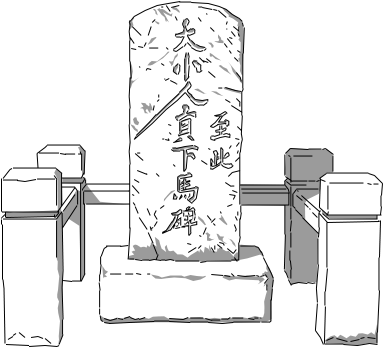
Jongmyo Jerye and Jeryeak
At the Jeongjeon Hall, Jongmyo Jerye or the royal ancestral memorial ritual is held every year on the first Sunday of May. Joseon’s history is now a thing of the past, but the same conventional rite from the year 1462 is still carried out today, with its original procedures kept intact. It is a very rare practice that is hard to find in any other part of the world. In 2001, the royal ritual, along with the accompanying music and dance Jongmyo Jeryeak, were included on the UNESCO list of Masterpieces of the Oral and Intangible Heritage of Humanity. Jongmyo Jeryeak consists of instrumental music, song and dance. The dance is characterized by simple yet magnificent movements.
Source: Cultural Heritage Administration


